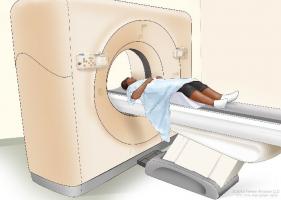Prolactin: what is it, how is it produced, and functions of this hormone
The endocrine system produces small molecules called hormones. Hormones act as messengers and influence many important processes in the body: they help maintain blood pressure, regulate sexual desire and control hunger, among other essential tasks. The same hormone can have different functions.
Prolactin is a protein hormone responsible for more than 300 different processes in vertebrates, including humans. It is best known for its role in breast growth and milk production during pregnancy and after childbirth. In addition to allowing lactation, it helps regulate the immune system, intervenes in the regulation of our metabolism and allows the development of the pancreas.
This hormone is secreted by the pituitary gland in response to different events: lactation, estrogen treatment and ovulation stimulate the production of prolactin. Other tissues of the human body can also produce it, but in smaller amounts.
In this article we will talk about prolactin, detailing all its functions and the problems that can occur if there are high levels of this hormone in the blood.
- Related article: "Types of hormones and their functions in the human body"
What is prolactin?
Prolactin (PRL), also known as lactotropin, is a hormone produced by the pituitary gland It stimulates milk production in the mammary glands and progesterone synthesis in the corpus luteum.
Prolactin is a peptide hormone, encoded by the PRL gene. In 1970, Henry Friesen confirmed its existence in humans; however, the hormone had already been discovered in other animals in 1930. It is a polypeptide, weighing approximately 22,500 daltons and its chain consists of about 199 amino acids. The hormone acts endocrine, autocrine and paracrine within the body and influences different systems.
The hormone is produced by different vertebrates and has different functions depending on the species; As we know, prolactin stimulates milk production in mammals, but in the case of fish, for example, it is responsible for controlling the balance of salt and water in the body. There are different variants and forms of the hormone by species, in humans there are three small forms of prolactin and several large variants.
Prolactin has many functions in the body. In the human species, it not only stimulates breast growth and milk production during pregnancy and after childbirth, it also plays a role in the immune system and has multiple functions related to the cell cycle, acting as a growth factor, differentiator and anti-death factor, it also participates in the growth of blood vessels, hematopoiesis and helps blood coagulation. In males, it relaxes the body after reaching orgasm.
- You may be interested: "The 10 branches of Biology: its objectives and characteristics"
How is prolactin produced?
The pituitary gland or hypophysis, a small gland located at the base of the brain, is responsible for producing prolactin in response to different stimuli such as ovulation.
The hypothalamus contains cells that control the secretion of many hormones, including prolactin. The tuberoinfundibulum is a part of the arcuate nucleus of the hypothalamus and contains nerve cells that secrete dopamine, also known as the prolactin-inhibiting hormone. These neurons control D2 receptors on lactotrophs (the cells that produce breast milk), reducing the secretion of prolactin. Another group of neurons in the hypothalamus, called thyrotropin-releasing factor neurons, increase prolactin secretion. Although prolactin is the only pituitary hormone whose primary control is inhibitory, it is not the only hormone regulated by these endocrine neurons.
Although most of the prolactin in the body is secreted by the pituitary gland. Other organs and systems of the human body are capable of producing prolactin, the nervous system The central nervous system, the immune system, the uterus, and the mammary glands secrete the hormone in larger amounts. little.
There are a number of factors that can stimulate prolactin production in any of the above tissues, including: nipple stimulation, exercise, and stress.
- Related article: "Endocrine system: anatomy, parts and functions"
Its functions in the body
Prolactin has a wide variety of functions. However, its effects vary between males and females. In addition, in other vertebrate species it participates in other essential tasks of the organism.
Prolactin in females
The hormones progesterone, estrogen, and prolactin promote the growth of breast tissue and milk production in pregnant people.
Prolactin causes the growth of a particular type of breast tissue called mammary alveoli, which are part of the mammary gland. It also causes the mammary alveolar cells to produce dairy ingredients, increases the production of lactose, casein, and other milk-producing proteins in the cells of the mammary gland, and lipids.
Although elevated prolactin levels are present before the baby is born, milk production does not occur until after delivery. Pregnant people produce high amounts of estrogen and progesterone which, among many other functions, inhibit milk production during pregnancy.

After giving birth, the mother's progesterone levels drop, causing the mammary alveolar cells increase the number of prolactin receptors. This allows milk to be pumped through the nipples, allowing for lactation.
Prolactin levels can go up or down after birth, if the nipples are sucked the prolactin level increases, breastfeeding stimulates the production of prolactin. If breastfeeding is stopped, milk production decreases and prolactin levels return to normal one to two weeks after the child is weaned.
High levels of prolactin have been shown to interfere with the menstrual cycle, preventing this from happening. Prolactin prevents the production of gonadotropins, a group of hormones involved in the regulation of reproduction and the cycle.
- You may be interested: "The 10 hormones of pregnancy (and their functions)"
Prolactin in males
Men also produce prolactin and the values considered normal are in a range of 10 to 15 ng/ml. At these levels, prolactin affects kidney function and regulates the amount of electrolytes in body fluids. Some high levels can cause breast development and galactorrhea (milk production), decreased libido and impotence.
Also, prolactin would be one of the main causes of some effects of the refractory period. The refractory period is the relaxation time that occurs after ejaculation and loss of erection after intercourse, is characterized by a decrease in sexual appetite and genital hypersensitivity that are accompanied by a state of relaxation and drowsiness, this last effect would be induced by the prolactin.
Functions in other vertebrate species
Prolactin has a multitude of functions in fish, mainly in homeostasis, that is, in the exchange of water and salts between a fish and the surrounding sea. As in humans, prolactin also influences fish, sexual maturation, reproductive cycles, brood care and rearing. Prolactin doesn't just affect fish, some studies indicate that elevated levels can cause hens to display more maternal behavior.
Mammalian research has shown that prolactin levels can affect hair growth. This would also occur in birds, where prolactin would have an effect on when they start to shed their feathers.
- Related article: "The 25 main organs of the human body"
Pathologies associated with prolactin
Hormones have to have stable levels. Insufficient or excessive levels can cause various health problems. In the case of prolactin, an amount in the blood above normal can cause certain alterations, such as irregular periods, infertility, and erectile dysfunction, among other symptoms. But... What can cause these high levels of prolactin?
Certain situations, apart from pregnancy and lactation, can cause prolactin levels to rise slightly: for example, certain medications to treat hyperprolactinemia, stress, epilepsy, breast stimulation, sexual intercourse etc. are factors that can increase the secretion of prolactin in different tissues. Normally, these changes in the amount of prolactin in the blood are usually mild and temporary and do not present relevant symptoms.
If prolactin levels are much higher than normal, in many cases it usually indicates that it has developed a prolactinoma, a type of tumor of the pituitary gland. A prolactinoma is normally a benign tumor, but if left untreated, the tumor can damage surrounding tissues.
The exact origin of prolactinomas is not known, but in some cases they may be related to genetics. Some neoplasms can potentially increase the possibility of developing this type of tumor. In terms of prevalence, women are more likely to develop a prolactinoma than men, and diagnosis usually occurs between the ages of 25 and 34.
Some medications that are involved in the production of dopamine, a prolactin inhibitor, can alter hormone levels and produce different symptoms in both men and women. women.

